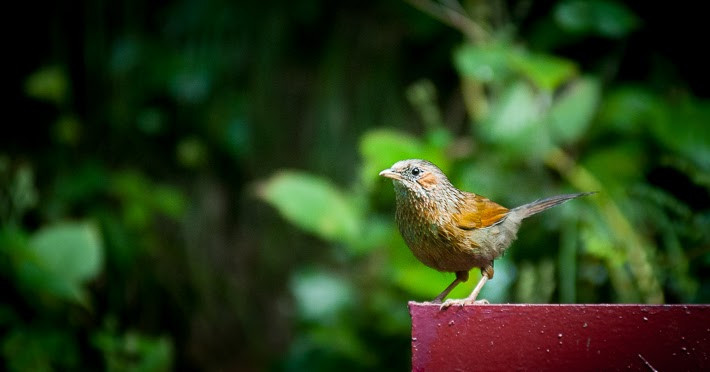views

India, a land of rich biodiversity and contrasting landscapes, is a paradise for bird watchers. From the snow-capped Himalayas to the lush Western Ghats, arid deserts of Rajasthan to the mangroves of Sundarbans, every corner of the country offers a unique birding experience. With over 1,300 recorded bird species, birding in India is not only diverse but also deeply rewarding.
A Diverse Habitat for Birds
India’s varied geography supports an incredible range of habitats, making it one of the most exciting destinations for birders worldwide. The Himalayas in the north are home to high-altitude species like the Himalayan monal, Snow partridge, and various pheasants. The wetlands in the north, such as Bharatpur’s Keoladeo National Park, attract thousands of migratory birds like the Bar-headed goose, Sarus crane, and various species of ducks and waders.
Moving south, the Western Ghats are a global biodiversity hotspot. Here, endemic species such as the Malabar trogon, Nilgiri flycatcher, and White-bellied treepie are the stars of the show. In the east, Assam’s Kaziranga and Manas National Parks offer sightings of Bengal floricans, hornbills, and a wide range of wetland and forest birds.
Iconic Birding Destinations
When it comes to birding in India, several locations stand out as must-visits:
Keoladeo National Park (Rajasthan): A UNESCO World Heritage Site, this wetland is a haven for waterfowl and waders. During winter, it's teeming with migratory birds and offers excellent photography opportunities.
Jim Corbett National Park (Uttarakhand): Known primarily for tigers, Corbett is also a birding hotspot, home to over 600 species including the Great hornbill and Ibisbill.
Pangot and Sattal (Uttarakhand): Ideal for those keen on Himalayan species, these hill stations are great for spotting colorful birds like the Himalayan rubythroat, Blue-throated barbet, and various laughingthrushes.
Thattekad Bird Sanctuary (Kerala): Also known as the Salim Ali Bird Sanctuary, it is a great introduction to the birds of the Western Ghats, with over 300 species.
Chilika Lake (Odisha): Asia’s largest brackish water lagoon, Chilika attracts over a million migratory birds in winter. It’s famous for its large flocks of flamingos and raptors like the White-bellied sea eagle.
Eaglenest Wildlife Sanctuary (Arunachal Pradesh): Tucked away in Northeast India, this sanctuary has become a global birding destination due to the discovery of the Bugun liocichla, a bird found nowhere else on Earth.
When to Go Birding in India
While birding in India can be enjoyed year-round due to its size and diversity, the best time generally falls between November and March, when migratory birds arrive from Central Asia, Europe, and Siberia. During these months, the weather is pleasant, and both resident and migratory species are active.
However, the monsoon season (June–September) also has its charm, especially in the Western Ghats, where the lush greenery brings out the breeding plumage and calls of several endemic species. Birding during this time requires patience and a good raincoat, but it can be incredibly rewarding.
Cultural and Conservation Context
Birds have held a significant place in Indian culture and mythology. From the Garuda in Hindu mythology to the peacocks adorning temples and palaces, birds are both symbols of beauty and spiritual messengers. This deep-rooted appreciation has, in part, led to strong conservation efforts in several regions.
However, challenges remain. Habitat loss, pollution, and climate change are threatening bird populations across the country. Fortunately, the rise in interest in birding in India has spurred community-based conservation efforts and eco-tourism initiatives. Many locals now act as guides and conservation stewards, blending sustainable tourism with traditional knowledge.
Tips for Birding in India
Hire a local guide: Their knowledge of bird calls, habitats, and behavior can make a huge difference in spotting elusive species.
Carry binoculars and a field guide: Books like Birds of the Indian Subcontinent by Grimmett, Inskipp, and Inskipp are excellent companions.
Be patient and quiet: Indian forests and wetlands can be bustling, but silence and stillness often lead to the best sightings.
Respect the environment: Avoid playing bird calls or disturbing nesting areas. Stick to eco-friendly practices to ensure sustainable birding.
A Lifetime Experience
Whether you're a seasoned birder with a life list or a curious traveler with a camera and an open heart, birding in India offers something extraordinary. Each region, season, and habitat has a different story to tell — one of feathers, flight, and freedom.
In a world where natural spaces are shrinking, India still provides sanctuaries where birds thrive and sing. And for those willing to listen and look, birding in India is not just a hobby — it’s a journey into the wild soul of the subcontinent.















![What Is The QuickBooks Enterprise Support Number [[GET Quick Assistance]]](https://timessquarereporter.com/upload/media/posts/2025-06/04/what-is-the-quickbooks-enterprise-support-number-get-quick-assistance_1749095947-s.jpg)






Comments
0 comment